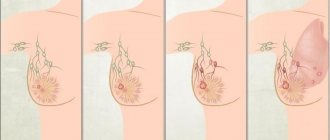To maintain the vital functions of all organs and systems, a person needs a constant supply of nutrients from the outside. A well-designed diet helps prevent the development of many diseases and significantly improve your daily well-being. Unfortunately, due to everyday stereotypes and well-established ideals in society, many people try to eat as little food as possible in order to fit into certain standards. Often such abstinence develops into a form of mental disorder. For example, anorexia is characterized not only by an eating disorder, but also by a distorted perception of reality.
Various forms of anorexia have been studied in detail in the last century. Now this disease is often found in young women. Men are less susceptible to anorexia and other types of eating disorders. Psychologists and doctors insist that such a disease is very dangerous due to possible negative consequences. First of all, we are talking about the somatic damage that occurs with anorexia. Also, the symptoms of the pathology can gradually intensify and become more complicated. The sooner mental fasting therapy is started, the better the prognosis.
Disease Information
In textbooks on psychiatry, anorexia (from the Latin word anorexia) is also called anorexia nervosa or mental abstinence from eating.
This is a fairly common pathology of the psyche of consciousness, most often found in women. Some epidemiological data indicate that up to 5% of women experience symptoms of anorexia at least once in their lives. Many attribute this high prevalence to societal beauty standards, but scientists also consider genetic and endogenous factors. The severity of a patient's condition when an eating disorder occurs can vary from mild malaise to extreme exhaustion.
Anorexia is primarily characterized by an altered perception of reality, causing patients to refuse regular meals. The disease manifests itself as a panicky fear of weight gain, severe anxiety and a persistent decrease in mood. Prolonged refusal to eat during anorexia almost always leads to secondary complications from various organs. We can talk about brittle nails, hair loss and more severe negative consequences associated with the functioning of vital organs. A girl suffering from an illness may not notice dangerous signs and consider her behavior a natural desire to look better.
Signs of anorexia: unhealthy exercise and food purging
Girls with anorexia are often interested in various sports, but for them sports are not a way to maintain health, but a method of losing weight. The attitude towards sport as a method of weight loss manifests itself in many situations. If a girl with anorexia does not feel well, she will not miss a run - after all, this is necessary for losing weight. The choice of exercises and sports is also very specific: for quick weight loss - jogging, for “burning fat” in the waist area - abdominal exercises. At the same time, other muscle groups, for example, arm muscles, are of little interest to a girl suffering from anorexia.
Another popular weight loss option for anorexia is “food purging” by inducing vomiting and taking laxatives. If after eating, especially sweets, a girl regularly rushes to the toilet, there is a high probability of inducing vomiting. This is far from a harmless thing - due to gastric juice, tooth enamel is destroyed, and an inflammatory process develops in the throat.
Regular use of laxatives or diet pills is another common symptom of anorexia. The harm of long-term use of pharmacological drugs without indications and without medical supervision is obvious.
Stages of development
Many doctors say that anorexia is a progressive mental disorder. In this case, the symptoms of the disease may not only intensify, but also change over time. The generally accepted classification of stages correlates well with the mechanism of development of an eating disorder. However, the development of anorexia may be less common in some patients.
Main stages:
- The appearance of a distorted perception of one’s own body. At this stage of the development of anorexia, a girl may have a reduced mood due to thoughts about the imperfection of her own body. Anxiety levels increase;
- The first stage of food refusal and pronounced weight loss. Girls pay attention to the “successes” of the chosen diet, which is why their mood temporarily improves. Patients convince people around them that they have no appetite;
- Stage of cachexia formation. At this stage, anorexic disorder causes disruption in the functioning of the endocrine, nervous, immune and other systems. A characteristic androgenic appearance appears, associated with an increase in male sex hormones (the appearance of increased hair growth on the face and body). In the future, severe complications and, often, irreversible changes associated with damage to internal organs appear. There is a threat of death.
Anorexia can develop over many years. Many psychologists note the importance of the disease transitioning from the diet planning stage to the active phase, when the sick teenager begins to refuse to eat. It is at this stage that it is important to find out which doctor to contact for anorexia.
Stages of anorexia
This disease is divided into three stages:
• primary. A person expresses dissatisfaction with his own body, he has a desire to change it for the better as quickly as possible. It is during this period that aversion to food and complete rejection of it appears;
• anorectic – active phase. Active weight loss occurs in different ways, 20-50% of weight is lost. Bulimia appears - food is absorbed in large quantities and vomiting is immediately provoked;
• cachetic – weight loss is already occurring uncontrollably, problems with blood vessels and the heart begin, and organ degeneration occurs.
The third phase is very dangerous, as it is very difficult to cope with and most often the patient dies. For example, the world was shocked by the deaths of two 22-year-old Ramos sisters. They died from this disease a year apart, with a height of 175 cm and a weight of 40 kg. Diagnosis: heart attack. And this is far from an isolated case.
Causes
Unfortunately, the etiology of anorexia is not well understood. To date, specialists know only the forms of predisposition to the disease and key risk factors. It is possible that in many patients anorexia may occur due to endogenous disorders in the brain, but psychological factors are much more important.
Known Causes:
- Physiological influences. Certain types of hormonal disorders may be responsible for the occurrence of anorexia. You should also take into account changes in brain biochemistry, which are characteristic of many mental illnesses;
- Genetic changes. Pathological sections of DNA molecules cause changes in neurons and parts of the brain. Genetic mutations are inherited;
- Psychological factors associated with the peculiarities of emotional reactions, the formation of personality in childhood and interaction with other people;
- Social environmental factors. With anorexia, the role of generally accepted standards of beauty in society is taken into account. Psychological violence in various groups has a particularly negative impact on a child or adolescent.
Thus, anorexia is a polyetiological disorder. Further study of the physiology of the nervous system will help specialists develop effective therapy for the disease.
Types and reasons
“Mannequin disease,” as anorexia is often called, has become a global scourge over the last 30-40 years. The abundance of glossy publications, television programs, photographs of successful people with beautiful figures, their popularity and demand for them, force girls from 14 years old, women up to 35 and even more, and even some men, to resort to extreme measures to be very thin.
This disease can also develop during stressful situations and hormonal imbalances.
There are different types of anorexia, each of which depends on specific causes:
• mental.
• symptomatic.
• nervous.
• medicinal or medicinal.
Having considered the reasons for the appearance of these types of dangerous illness, you can understand what causes anorexia. The rarest of them is a mental form that develops as a result of mental illnesses such as depression, paranoia, and schizophrenia. As for the symptomatic and medicinal type, they are based on the following physiological factors:
1. Abuse of medications (antidepressants).
2. Changes in the normal level of brain hormones - norepinephrine, serotonin, cortisol.
3. Diseases of any organs.
The most common form of anorexia is nervous, its causes lie in human psychology:
1. An irresistible desire to meet the standards imposed by society and the media.
2. Any violence - sexual and physical.
3. Striving for ideal – perfectionism.
4. Psychological trauma.
5. Strict control of your life. 6. An inferiority complex instilled in childhood.
Not only young girls with complexes who have no prospects and are in conflict with their parents suffer from anorexia. Among celebrities, well-established, famous and rich people, there are also many of them: Victoria Beckham, Angelina Jolie, Rachel Zoe, Mary-Kate Olsen.
Risk factors
In addition to the supposed theories of the origin of the disease, scientists are also considering various risk factors. These conditions increase the risk of anorexia, but do not independently determine the formation of the disorder. The discovery of many forms of predisposition to the disease helped psychologists develop the prevention of eating disorders in adolescents.
Key risk factors:
- Low self-esteem, causing psychological discomfort.
- Dysfunctional family. Strictness, lack of a warm relationship with the father, formalization of education by parents can affect the development of anorexia;
- Negative experiences of interaction with peers, primarily formed in schools and other educational institutions. A girl may become depressed because of ridicule about her excess weight or other aspects of her appearance;
- Complicated family history. Having close relatives suffering from mental illness increases an individual's risk of developing the disease;
- Age. Anorexia most often occurs in women aged 15 to 35 years.
Doctors believe that hereditary factors in anorexia do not play as important a role as the psychological state. It is reliably known that the disease is not transmitted directly to children from parents.
Treatment prices:
| Service | Price, rub) |
| Consultations | |
| Consultation with a psychologist in person or via Skype | 3 000 ₽ |
| Consultation with a narcologist | 3 000 ₽ |
| Psychiatrist consultation | 5 000 ₽ |
| Consultation with the head physician | 10 000 ₽ |
| Psychodiagnostics / pathological diagnostics | 7 500 ₽ |
| Family psychotherapy | 6 000 ₽ |
| Intervention session | 12 000 ₽ |
| Help for relatives | |
| Support groups for loved ones of addicts | for free |
| Webinars for relatives of addicts | for free |
| School for codependents 1 month | 5 000 ₽ |
| Motivating an addict for treatment | 6 000 ₽ |
| Accompanying the patient to the clinic | 6 000 ₽ |
| Advanced hospitalization | 15 000 ₽ |
| Service | Price, rub) |
| Rehabilitation | |
| Social rehabilitation of addicts | specify |
| Basic rehabilitation program | 40 000 ₽ |
| Standard rehabilitation program | 75 000 ₽ |
| Intensive rehabilitation program | 100 000 ₽ |
| Premium rehabilitation program | 350 000 ₽ |
| Online rehabilitation for addicts | 39 000 ₽ |
| Outpatient rehabilitation in Moscow | 55 000 ₽ |
| Rehabilitation of age-related alcohol addicts | 75 000 ₽ |
| Adolescent social-psychological-pedagogical rehabilitation | 60 000 ₽ |
| Rehabilitation Montenegro, Israel | 300 000 ₽ |
| Medical and social rehabilitation (14-21-28 days) | 90 000 ₽ |
| Transfer support | negotiable |
| Analyzes | |
| Drug testing urine analysis | 2 500 ₽ |
| Drug testing blood test | 12 500 ₽ |
| Hair drug test 3 months | 18 000 ₽ |
Expand
We will select an individual treatment plan
Free consultation 8-800-200-27-23
Classification
Anorexia is primarily classified according to etiological factors. When studying the disease, doctors paid attention to different mechanisms of development of the disorder and identified the corresponding forms of the disease.
Anorexia can be divided into the following forms:
* Anorexia nervosa: pathology of the neurotic level. Typically, the onset is in adolescence. The prognosis is favorable.
* Mental: the pathology is more severe. It is based on an endogenous disorder, often on the schizophrenia spectrum. Late onset is typical, after 30 years. The prognosis is unfavorable.
The disease can occur through one or more mechanisms. Clarifying the etiology of the disorder allows specialists to select the most effective treatment regimen.
Atypical anorexia
Atypical anorexia is characterized by a number of symptoms, but the weight remains within the normal range. Very often, people who are obese and have lost extra pounds suffer from this disorder:
- Obsession with the benefits of products.
- Calculation of calorie content of even a dessert spoon of some product.
- Periodic fasting days.
- Strict weight control down to the gram.
- Excessive passion for physical activity.
This condition is borderline between normal and pathological. Atypical anorexia can develop into standard anorexia at any time.
Find out treatment recommendations without leaving home for free
To select a treatment plan, you just need to leave a request, we will contact you to select the time and specialist you need
Submit your application
Symptomatic picture
Symptoms of anorexia are conventionally divided into psychological and somatic. In the first stages of the development of the disease, psychological symptoms appear, forcing the patient to refuse to eat. Late somatic manifestations of pathology are considered the most dangerous.
- There are two forms of anorexia: restrigenic (restrictive) and bulimic (a combination of periods of restriction and gluttony).
Anorexia can cause the following symptoms:
- Constant worry, anxiety about potential weight gain;
- Restriction in food is often combined with periods of overeating followed by rejection of food, causing vomiting. Over time, the gag reflex develops to the point of automaticity;
- Much attention is paid to sports;
- Dissatisfaction with one's own appearance;
- Constantly weighing or, conversely, avoiding knowledge of weight;
- “Mirror symptom”—frequently looking at oneself in the mirror;
- Avoiding conversations about weight with people around you;
- The desire to prepare food and feed it to your family members;
- Loss of interest in people, apathy;
- Insomnia or, conversely, prolonged sleep;
- Dizziness and fainting;
- Paleness of the skin;
- Intrusive thoughts;
- Loss of large amounts of hair and brittle nails;
- Prolonged absence of menstruation;
- Fatigue and weakness;
- Defecation disorder;
- Suicidal behavior;
- Social isolation;
- Decreased libido;
- Unmotivated anger, irritability.
As already mentioned, anorexia has a progressive course, so over time, new negative signs of the disease may appear. It is important to pay attention to the first symptoms of an eating disorder in time and begin therapy.
Symptoms
- A sharp reduction in the amount of food.
- Avoiding sharing breakfasts, lunches and dinners with family members, colleagues, and friends.
- Chewing food for a long time to create the appearance of eating food. For example, a person can chew one spoonful of salad during a couple of hours of feasting.
- Lack of adequate perception of your own body - even gained 200 grams becomes a disaster.
- If food intake cannot be avoided, the person induces vomiting artificially.
- Sharp weight loss “down to the bones”, while the patient believes that he is overweight.
- In the early stages, it is typical to completely exclude “harmful” foods from the diet - meat, milk, baked goods. The situation is aggravated by such fashionable trends as raw food diet or veganism.
- Sudden mood swings, aggressiveness, nervousness.
Diagnostics
To detect anorexia, the patient can go to a public clinic or a private center. During the initial appointment, the specialist will ask about complaints and study anamnestic information to identify risk factors. Already at the interview stage, a doctor or psychologist may suggest the presence of the disease, but anorexia can be definitively diagnosed only after a detailed examination.
Diagnosis criteria:
- Detection of signs of malnutrition during physical examination. Doctors pay attention to the skin, nails, hair and the volume of subcutaneous fat. The early stages of anorexia do not always have somatic manifestations;
- Assessing the performance of internal organs to detect the negative consequences of anorexia. Specialists examine the cardiovascular system, kidneys and other organs. Laboratory tests that help quickly diagnose anemia are also important;
- Clinical psychiatric research, with the possible use of special questionnaires and tests.
In addition to the above examinations, the doctor can conduct neurological diagnostics to rule out various forms of brain damage. In rare cases, anorexia occurs solely against the background of organic processes in the central nervous system.
Causes of the disease
The exact causes of anorexia nervosa are unknown. The most likely provoking factors are psychological and biological. Physical reasons have not yet been established.
Consider risk factors that increase the likelihood of developing anorexia. Excessive preoccupation with body image and weight, or dieting, likely increases the risk of developing anorexia. There may be a genetic predisposition.
Biological factors.
Excess body weight, early onset of first menstruation. A possible reason is the dysfunction of neurotransmitters that regulate eating behavior - serotonin, dopamine, norepinephrine. Studies have shown dysfunction of these neurotransmitters in patients with eating disorders. Female. This disorder can also occur during puberty. More than 50% of prepubertal and pubertal girls diet or take other measures to control their weight
Family factors.
A certain role in the onset of the disease is played by parents paying increased attention to the appearance and weight of the child, bullying from peers, and the presence of relatives with bulimia nervosa, anorexia, and obesity.
Psychological factors.
Low self-esteem, perfectionist traits, obsessive personality type, depression, feelings of inferiority are risk factors for the development of anorexia nervosa, especially the restrictive type.
Social factors.
The emphasis is on slimness as the main sign of female beauty, which serves as motivation to achieve the “ideal”. Stressful events, such as the death of a close relative or friend, or sexual or physical abuse, may also be risk factors for developing an eating disorder.
Which doctor should I see for anorexia?
Psychiatrists primarily deal with disorders of higher mental activity. These are specialists with higher medical education who have completed postgraduate training in the relevant profile. At the same time, anorexia is included in the professional field of not only psychiatrists, but also psychotherapists with medical education. The latter pay more attention to various methods of psychotherapy. When treating eating disorders, the patient can work simultaneously with a doctor and a psychologist to improve the results of therapy. It should be borne in mind that psychologists cannot prescribe medications, which are sometimes necessary to correct anorexia.
To undergo a comprehensive examination and treatment, it is sometimes better to go to a medical clinic. For example, many Moscow centers specialize in the treatment of this condition. In this case, after the examination, the psychologist will be able to tell the patient which doctor to contact for anorexia complicated by damage to internal organs. A woman may need to consult a nutritionist, therapist, or other doctor. Sometimes severe anorexia requires only inpatient treatment.
At what weight does anorexia begin?
The limits of normal weight can be measured using the body mass index. Body mass index is calculated using the formula: I =m/h2, where: • m - weight in kilograms • h - height in meters For example, a girl’s weight = 50 kg, height = 170 cm. Accordingly, the body mass index in this case is equal to: BMI = 50: (1.70 × 1.70) = 17.3
BMI indicators according to WHO recommendations:
Lack of body weight is a reason to consult a doctor to determine the causes and ways of weight correction.
The connection between bulimia and anorexia
There are several common eating disorders, including anorexia and bulimia. Patients often confuse the signs of these diseases. First of all, it is worth noting that bulimia is a less dangerous mental disorder, since girls suffering from such an illness rarely lose weight to the stage of cachexia. Bulimia is characterized by episodes of binge eating and induced vomiting.
Anorexia and bulimia have the following similar symptoms:
- Marked fluctuations in body weight with the development of pathology;
- The appearance of anxiety and persistent depression of mood;
- Dissatisfaction with appearance;
- Psychological distress;
- Eating disorders;
- Obsessive ideas;
- Irritability and dysphoria;
- Decreased libido and apathy;
- Predominant occurrence in women.
Thus, anorexia and bulimia share some common symptoms. However, the prognosis for anorexia is less favorable due to progressive dystrophy and damage to internal organs.
Anorexia - symptoms and treatment
Anorexia nervosa (AN) is a mental disorder characterized by the patient's rejection of his body image and a pronounced desire to correct it by restricting food intake, creating obstacles to its absorption, or stimulating metabolism.[1]
According to the International Classification of Diseases (10th revision): anorexia nervosa (F 50.0) is a disorder characterized by deliberate weight loss caused and maintained by the patient. The disorder is associated with a specific psychopathological fear of obesity and sagging figure, which becomes an annoying idea, and patients set a low body weight limit for themselves. As a rule, various secondary endocrine and metabolic disorders and functional disorders occur.[2]
Prevalence of anorexia
Eating disorders (EDs) are serious illnesses that impact both the physical and emotional health of young people and overall families, morbidity and mortality. Eating disorders affect 2-3% of the population, 80-90% of whom are women.[8] Anorexia nervosa (AN) is one of the forms of this type of disorder. The prevalence of AN among women aged 15 to 40 years is 0.3-1% regardless of culture, ethnicity and race. European studies have demonstrated a prevalence of 2-4%. Anorexia tends to become chronic in more than 50% of people who develop the condition again after full recovery.[6][7][13]
Risk factors
Over the years, various theories have been put forward to try to explain the possible causes of anorexia. It is assumed that current pharmacological and psychological treatments for anorexia cannot address the neurobiological factors or mechanisms responsible for development and maintenance because it is unclear what this actually is. To better understand the etiology of mental illnesses, including AN, a new transdiagnostic approach, RDoc, is being developed in the United States. This approach examines the causes of features shared across multiple disorders rather than features shared by discrete diagnostic categories. Potentially causal neural abnormalities that have not previously been considered in etiological models can be isolated using this transdiagnostic approach.[13]
A combination of factors leads to the development of eating disorders.
External factors
There have been many discussions about the influence of the media on the standard of female body image, and they continue to this day. In 2000, a summit was held in the UK between fashion magazine editors and government representatives to assess the links between popular images of women and body and nutritional disorders. Psychotherapist Susie Orbach (2000), a member of the group, spoke about the role of the media and its ability to promote body dissatisfaction in women. One of the conclusions of the conference was that fashion standards do not cause eating disorders, but do appear to provide a context in which they can develop.
Transactional analysts explain this phenomenon as follows: Some youth accept the “thin model” as an ideal or opportunity to model and internalize the parental message from the media as if it were a cultural parent. The image provides the opportunity to feel "OK" through changing the parameters of the figure of people who do not have a sense of their innate "OK".
The risk group also includes people who have experienced sexual violence and were born into a family with problems with excess weight.[9][18]
Internal factors
Over the past three decades, research has established that genetic factors contribute to the development of AN.
Recent results from genetic meta-analyses indicate that serotonin genes may be involved in the genetic etiology of AN. Some studies indicate possible genetic comorbidity of AN with other psychiatric (eg, bipolar disorder) and physical diseases, as well as a shared genetic risk between AN and certain psychiatric and metabolic phenotypes. Dozens of studies have been conducted, but unfortunately very little information has been obtained about the genetic contribution to the development of AN. This is due to the insufficient number of studies and the fact that only a portion of them were completed to draw definitive conclusions about the significance of their results.[29][30]
Structural neuroimaging studies of the brain in AN have primarily focused on gray matter changes. To date, studies examining white matter abnormalities are rare. Thus, recent studies have shown that a structural abnormality of the brain is a prerequisite for the development of AN. Several studies have demonstrated changes in gray matter volume (GMV) using voxel-wise analysis in patients with AN compared with controls. For example, Mühlau et al found a 1% to 5% reduction in the volume of regional SVG bilaterally in the anterior cingulate cortex of AN patients, which was significantly correlated with the lowest body mass index (BMI). Boghi et al found significant reductions in total white matter volume (WM) and local WM atrophy in the cerebellum, hypothalamus, caudate nucleus, and frontal, parietal, and temporal regions. Additionally, a relationship between BMI and SVG volume has also been found in the hypothalamus.[14]
There is scientific evidence that the gut microbiome of individuals with AN may have unique characteristics that also contribute to maintaining a severely calorie-restricted diet.[13][21]
Personal factors
People with the following characteristics are at greatest risk: childhood obesity, female gender, sudden mood swings, impulsiveness, personality lability, perfectionism. And also people with low, unstable self-esteem and an external locus of control. One of the triggers is adolescence. Puberty itself is a transitional stage, a crisis that brings with it physical and psychological upheaval as sexuality develops. Some authors emphasize the importance of eating disorders to avoid or even enable reversal of sexual development. Which has the secondary benefit of no sexuality, no relationships, no adult physical characteristics, and no adult responsibilities. Clinical observations characterize people with AN as highly anxious. This is supported by empirical studies that report high trait anxiety and higher rates of anxiety disorders in this population compared to the general population. It has been documented that anxiety disorders of varying severity precede the onset of the disease and play an important role in its development.[9][14][18]
How is anorexia related to bulimia?
Anorexia nervosa and bulimia are often viewed as two sides of the same disease - an eating disorder. Anorexia nervosa may not be accompanied by bulimia, but in both cases patients are dissatisfied with their weight and strive to reduce it.
Pregnancy with anorexia
Anorexia nervosa is rare during pregnancy. Its most common consequences are miscarriage, preeclampsia and intrauterine fetal death. Pregnant women often try to control weight rather than lose weight (pregorexia), so this desire does not apply to anorexia nervosa.
Treatment methods
Treatment for anorexia nervosa can be done in an inpatient or outpatient setting. The main goal is to correct exhaustion, restore the functions of internal organs and normalize food intake. Elimination of mental symptoms of the disease is carried out after stabilization of the somatic condition.
Main methods of therapy:
- Restoration of liquid, salt and acid-base balance in the body. Intravenous infusion of nutrient solutions may be required;
- Treatment of primary mental disorders with antidepressants, antipsychotics and other medications. Anorexia itself is not eliminated by such methods, however, correction of the underlying psychopathological syndrome is very important;
- Psychotherapy aimed at improving the patient’s mental state. Methods of group and individual therapy are used;
- Working with a nutritionist to select a healthy diet and restore body weight.
The duration of therapy depends on the person’s condition and the severity of the complications encountered. In most cases, therapy for several weeks is sufficient. In more severe cases, treatment takes several years. It is important to note that treating anorexia at home is contraindicated. This approach to therapy will only worsen the person’s condition.
Treatment of anorexia in Moscow
The psychiatrist builds a treatment strategy based on the phase of the disease. This can be dietary nutrition, medication and psychological assistance. First of all, the patient must admit the presence of anorexia and show a desire to get rid of it. With the help of a specialist, he reevaluates his ideals and forms a different attitude towards his own body and himself.
As a rule, treatment occurs on an outpatient basis; in extreme cases, hospitalization is required. In their work with the patient, doctors rely on the help of the patient’s relatives, who must support him in every possible way.
Forecast
With timely medical care, doctors are able to normalize the patient’s condition and restore the functions of vital organs. A high mortality rate is observed with the protracted nature of the disease and the lack of psychiatric care. It is not always possible to eliminate all psychological complications of pathology even several years after the start of therapy, but working with a psychologist can significantly improve the quality of life.
Thus, eating disorders are serious illnesses. Anorexia should not be underestimated, since complications of this disease can even cause death. Timely contact with a specialist helps improve the prognosis.
Anorexia nervosa in adolescents: developmental features
Nervous weight loss in adolescents occurs very often due to mental immaturity and acute perception of other people's opinions. For example, even the slenderest girl begins to hate her body after a careless joke, or under the influence of the media she gets carried away with diets, calorie counting, etc.
Parents should be attentive to their children, create a comfortable environment at home, have heart-to-heart conversations more often, and not be solely interested in studies. You should also not divide foods into good and bad, which many people often do. Explain to your child that food is fuel for the body; without a varied diet within reasonable limits, the whole body will suffer.
If your son or daughter begins to lose weight sharply, avoid eating, or you notice strange behavior - do not self-medicate, but immediately consult a doctor. Timely adoption of measures greatly increases the chances of a successful outcome.
Complications
With anorexia, disorders of the endocrine system are often encountered. The level of production of sex hormones, the level of thyroid hormones thyroxine (T4) and triiodothyronine (T3) decreases, and the secretion of cortisol increases.
Often girls experience amenorrhea. Bone mass decreases and osteoporosis develops. People with severe anorexia may experience disturbances in all organ systems. Basically, against the background of anorexia, dehydration and metabolic alkalosis develop. Changes also occur in the blood. Blood cholesterol levels increase. The level of macro- and microelements in the body decreases, the electrolyte balance is disturbed, anemia develops, and the concentration of leukocytes decreases. The condition worsens with repeated induction of vomiting, taking diuretics, laxatives and other drugs used to “cleanse” the body.
Often, patients with this disorder experience disorders of the cardiovascular system due to electrolyte imbalance: mitral valve prolapse, QT prolongation, decreased cardiac output, arrhythmia, hypotension. Sudden death is possible, usually due to ventricular fibrillation.








